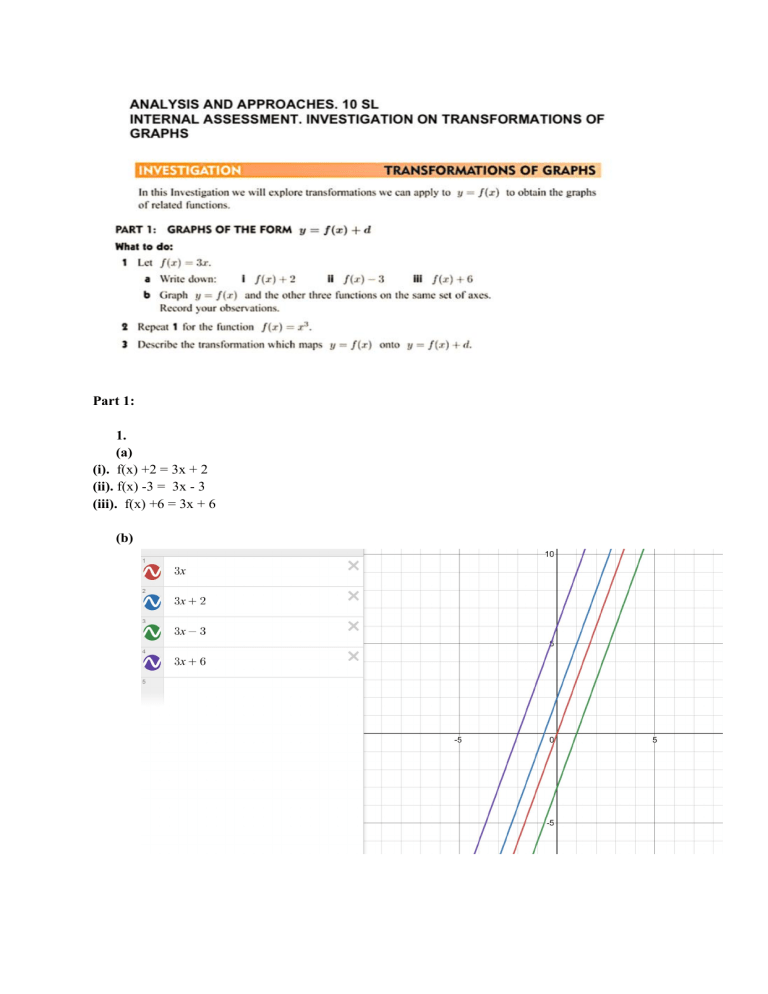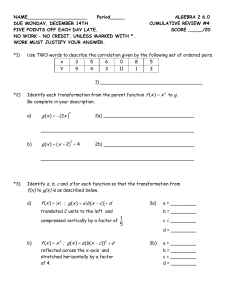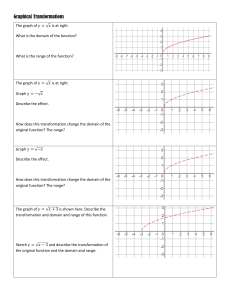
Part 1: 1. (a) (i). f(x) +2 = 3x + 2 (ii). f(x) -3 = 3x - 3 (iii). f(x) +6 = 3x + 6 (b) 2. (a) (i). f(x) +2 = x3 + 2 (ii). f(x) -3 = x3 - 3 (iii). f(x) +6 = x3 + 6 (b) 3. To comprehend this transformation, imagine a graph that shows the relationship between the values of y and x as defined by the function y=f(x). This function is a collection of (x,y) pairs that satisfy the equation y=f(x), and the graph is a visual representation of these pairs on a coordinate plane. By adding a constant value d to the function, we move the entire graph upward by d units. This means that for every (x,y) pair in the original graph, we now have a corresponding pair (x,y+d) in the new graph. This transformation can be expressed mathematically as follows: y=f(x) --> y=f(x)+d Here, y=f(x) denotes the original function, while y=f(x)+d denotes the transformed function. The transformation is essentially a vertical shift of the function by d units. Part 2: 1. (a) (i). 3x + 6 = 3f(x) (ii). x/2 + 1 = ½f(x) (iii). 5x+10 = 5f(x) B. C. The transformation y=pf(x) multiplies the distance of each point from the x-axis by a positive constant p. D. Its possible for a point on the graph of y=f(x) to not move under the transformation y=pf(x) if the value of f(x) is zero at that point. These points are called x-intercepts of the graph. 2. (a) (i). 2x+2 = f(2x) (ii). x/3 + 2 = f(1/3x) (iii). 4x+2 = f(4x) B.. C. The transformation y=f(qx) multiplies the distance of each point from the y-axis by a positive constant q. D. Yes, it is possible for a point on the graph of y=f(x) to not move under the transformation y=f(qx) if the value of f(x) is zero at that point. These points are called y-intercepts of the graph. 1. (a) (i). -2x-3= -f(x) (ii) -2x+3= f(-x) (b) 2. (a) (i) -x3-1 = -f(x) (ii) -x3+1 = f(-x) (b) 3. (a) The transformation that maps y=f(x) to y=-f(x) is a reflection about the x-axis, which flips the graph upside down. (b) The transformation that maps y=f(x) to y=f(-x) is a reflection about the y-axis, which produces a graph that is symmetric to the original graph with respect to the y-axis.




